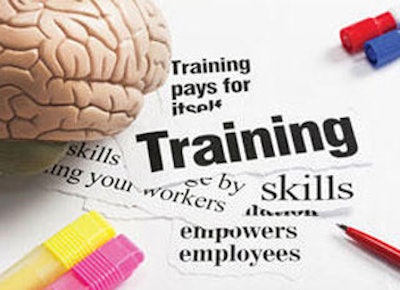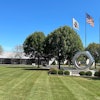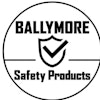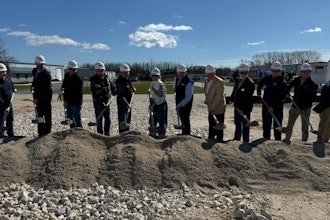
This is part two of a two-part piece. Part one can be found here.
The Miracle on the Hudson
On January 15, 2009, US Airways Flight 1549 took off from New York’s LaGuardia Airport with 150 passengers. Within minutes of takeoff, the plane lost both engines to a double bird strike, and Capt. Chesley B. Sullenberger III had to ditch in the Hudson River. This type of incident usually results in severe injuries and fatalities. In this case, all 155 passengers and crew went home to their families that night. The worst injury was a broken arm.
How is this possible? Here was a terrifying emergency that struck a bunch of strangers, who then had to coordinate their response within moments.
To get the answer, I turned to the National Transportation Safety Board (NTSB), which investigates nearly every plane crash worldwide, and produces encyclopedic reports on causes and effects. NTSB pointed to two examples.
Both crashes involved Boeing 737s. Both crashed and burned at airports. In both cases, passengers had precisely two minutes to escape before the fuselage exploded. In one crash, all 150 passengers escaped. Not even a broken arm. In the other crash, 55 of 137 people onboard died.
Why? In the crash with no fatalities, nearly every passenger was a frequent business flier — like those on US Airways Flight 1549 — who had heard the safety message so often they could recite it. When the emergency struck, they knew what to do.
In the other airport crash, every passenger onboard was a first-time flier — families on a charter going on vacation. The NTSB reported that a majority of the 55 deceased still had their seat belts firmly buckled. They didn’t know how to respond.
The Gray Area of When to Train New Hires
How soon you should train new hires or embedded contractors (for purposes of emergency response, OSHA says you’re the “host employer” and thus responsible for all contractors) is a gray area. There is no law, regulation or standard that says when a new hire should be trained. Many experts and OSHA compliance officers opine new hires should be trained when exposed to the possibility of an emergency. In other words, on day one.
Other experts recognize that all-hazards classroom training by a qualified trainer can’t happen every day there is a new hire. Accordingly, some believe that a new hire can be trained within the first 90 days in order to gang other new hires and make training classes more efficient.
Special Needs Personnel May Not Be Obvious
Special needs personnel (SNP) require extra attention in training. Every state’s fire code, all the aforementioned national standards, and ADA regulations and guidelines require every employer to plan and train their personnel to address the management of SNPs during any emergency.
The federal government defines SNPs for emergency response purposes as those who are pregnant, mobility-challenged (on crutches, in wheelchairs, have a prosthetic limb, etc.), don’t speak English, are under 18 years of age, hard of hearing or vision impaired. You should also consider those who have recently returned from surgery or injury.
SNPs can be your employees, contractors and visitors. Everyone is your responsibility.
Command, Control & Communications
In every study of emergency response, you’ll find command, control and communications (CCC) at the heart of success or failure. Training CCC to both the emergency team and all employees is essential for success.
First, you need a chain of command (CoC) that designates who is in command for any emergency. That CoC needs to be deep to accommodate the absence of top people.
Next, all employees need to know how the emergency team will work so commanders can simultaneously exercise control over all personnel throughout the facility and outside. CoC must extend to all parts of the site to cover employees, contractors, visitors — including SNPs — throughout the emergency.
Your CoC must recognize that building management and/or emergency services will only have a few personnel at your site, all of whom will be busy in chaotic circumstances when your emergency begins. Thus, even though building management and/or emergency service may be giving orders, your emergency team will have to implement those orders regarding the movement or sheltering in place of your personnel.
Since cell phones and push-to-talk rarely work during an emergency, you need to arm your emergency team with two-way radios. Moreover, you should have an emergency notification system to communicate with all of your on- and off-site stakeholders. You need to regularly train on all CCC technology to ensure they work during any emergency.
The Secret Benefit of Employee Training
I hear many excuses from management regarding employee training:
- “Our people are too busy.”
- “Our folks have the attention span of bumble bees.”
- “They won’t stand for it.”
- “This will scare them to death.”
When a national sample of American employees was surveyed about their most important issue at work, 85 percent said it was safety (National Opinion Research Center, 2010). All other workplace issues garnered a response 50 percent or less, including wages/salary, leave and union issues.
I have trained more than 12,000 employees in all kinds of workplaces across the country. I survey immediately after training, asking for candid feedback and assuring confidentiality. Of those 12,000 trainees — employees just like yours — 98.5 percent report that they were thrilled to receive emergency training:
- “Why haven’t we done this before?”
- “Can we do this more often than once a year?”
- “I can use this at home.”
Your employees thirst for this training.
Conclusion
It's great to have EAPs and FPPs, yet training is everything. Here is a summary of the points to consider:
- As an employer, you are required by law and national standards to train all of your employees and contractors, including your emergency team, at plan creation, then annually thereafter and at hire.
- Training shall be "all-hazards," covering two dozen foreseeable threats. Your personnel shall be trained in how to manage the emergency response of visitors and SNPs.
- The span of control of your emergency team should be 1:5 regarding all occupants on your site.
- Command, control and communications are the key to success or failure in all emergencies.
- Federal law requires “hands-on” and “site-specific” training of all personnel by a “qualified” trainer in a classroom where questions can be asked and answered.
- And remember that when an emergency strikes, if you are not compliant in your training, your management can be held legally responsible: “There are precautions so imperative that even their universal disregard will not excuse omission.”
In real estate, the three most important things are location, location, location. In emergency response planning, the three most important things are training, training and more training.
To read part one of this two-part series, please click here. What’s your take? Please feel free to comment below! Bo Mitchell was police commissioner of Wilton, CT for 16 years, but retired to found 911 Consulting to create emergency and business continuity plans, training and exercises for organizations. Mitchell has earned 16 certifications in organizational safety and security, while also serving as an expert in landmark court cases nationally. He is also a certified business continuity professional, certified emergency manager and certified in homeland security. For more information, please visit www.911consulting.net.






















